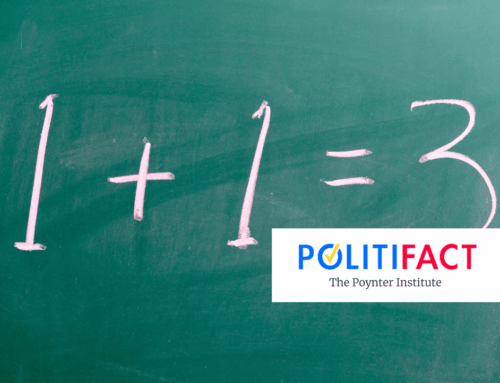There is wide agreement inside and outside of Washington that the recent level of Congressional dysfunction has reached troubling heights.
The decline of productivity and comity has led to a robust discussion among the press, political scientists and politicians about the underlying reasons – from the historically rare partisan split in control of the two chambers to the deep ideological divide on many critical issues to the 24 hour news cycle that rewards vituperative and inflammatory comments about the opposition. There is a similarly vigorous debate about possible remedies, with proposals ranging from decreasing or increasing Congressional transparency to changing Congressional schedules to ensure members spend more time together building relationships. One suggested remedy has been to bring back earmarking, a practice in which lawmakers insert narrow provisions into legislation to fund projects or companies back home.
History suggests that the return of earmarks would divert needed funds from priority projects to less critical ones and increase the number of lobbyists and campaign cash. But there is little evidence that earmarks break gridlock and reduce the very real ideological divisions we see in today’s Congress. In fact, bringing earmarks back may reduce momentum to obtain more substantive and transformative reforms.
Earmarks have been subject to a moratorium since 2011, after coming to prominence and the public eye from the mid-1990s to 2006, when they increased from a little more than 3,000 in 1996 to more than 15,000 in 2005.
The earmark heyday does not coincide with a high water mark of Congressional cooperation. Indeed, the last time Congress passed a budget and all appropriations bills individually and on time was 1994 – before the earmark boom. Great legislative accomplishments of the last half century – from the Interstate highway system, the Civil Rights Act, Tax Reform Act of 1986, the Clean Air and Water Acts to name a few– all passed in times when earmarks were relatively insignificant.
The start of the rise of earmarks is relatively easy to trace. Then-House Speaker Newt Gingrich looked at earmarks as a possible tool to retain the majority. In a 1996 memo, Gingrich stipulated that in addition to going to powerful lawmakers, earmarks should be directed to vulnerable lawmakers so they could take credit at home and shore up their re-election chances. For perspective, the defense spending bill had a dozen earmarks in fiscal year 1970, 62 in 1980, and 2,879 in 2006.
But even for bills that were the most heavily earmarked, the presence or absence of earmarks did not seem to make them easier to pass. It took seven years – five more than it was supposed to – to enact the Water Resources Development Act of 2007. As were its predecessors, that bill was chock full of hundreds of earmarked water projects and studies. After failing again to get back on a two year cycle, many worried that the earmark moratorium would make passing a new act even harder. Instead, it took the same seven years to get the next bill passed. The Water Resources Reform and Development Act of 2014 didn’t have earmarks, but it did include significant policy reforms and directives to the agency, something sorely lacking from previous versions.
So, if earmarking didn’t give us deal-making, what did it bring us? The closer you look the more it looks like earmarking encouraged collusion, and … earmarks. Most earmark deals were not criminal (although some certainly were, as the former super-lobbyist Paul Magliocchetti could tell you), but the problems with the system were manifest. Plenty of worthy projects were funded through earmarks, but the opportunities for corruption, both personal and institutional, loom large.
The underlying assumption of the Gingrich approach underscores one major problem: the earmark system ensured that projects were funded based on political factors, not project merit. Not only did this ensure a distortion in priorities, favoring communities represented by the politically vulnerable or powerful over more truly urgent needs, it also allowed earmarks to become a clear way to reward campaign contributors and lobbyists. Earmarks were used as a tool of pay-to-play politics; thousands of dollars in campaign cash can – and did – turn into millions of taxpayer dollars for a lobbyist client.
And there were many losers in the old earmarking system. For instance, an award-winning Congressional Quarterly analysis of Taxpayers for Common Sense’s databases for fiscal year 2008 found that the average white Democrat got $12 million in earmarks, the average black Democrat received $6.1 million and the average Hispanic Democrat $5.7 million, half of the white Democrat average. Furthermore, even though Democrats controlled the chamber and got the majority of earmarked funding, the average Republican got more than minority lawmakers, grabbing $8.7 million. Perhaps need and merit – or even political grease for votes – worked out that way, but it is hard to believe.
Even in infrastructure investment – an area where many say Congress knows best and earmarking is the way to go – there are still losers. Only Alaskan lawmakers Ted Stevens and Don Young ever argued that the “Bridge to Nowhere” was the best use of the $231 million earmarked for the Gravina Island Access Project. In a 2007 report, the Department of Transportation inspector general said clearly that “Many earmarked projects considered by the [state] agencies as low priority are being funded over higher priority, non-earmarked projects.” The report also pointed out that earmarks reduced funding for state established core priorities, went to projects otherwise ineligible for funding, and delayed locally-vetted, higher priority projects. Earmarks also displaced funds that should have gone to repair in favor of new construction. And in the 2005 transportation bill, perhaps the pinnacle of earmarks, the dollar amount of earmarks each lawmaker received was almost purely a reflection of their relative position and proximity to decision-making power over the bill.
There is a false choice posed by many people arguing the benefits of the return of earmarks: spending decisions are either 1) made by faceless bureaucrats in Washington or, 2) by lawmakers who know their districts better. In reality, appropriations bills offer many opportunities to direct agencies how to spend money by setting clear priorities, identifying funding eligibility standards, or increasing or decreasing funding to existing programs. And while a lawmaker may know their district better than some “bureaucrat,” they don’t know all 435 congressional districts better, and that’s what is being decided when cash is directed to one priority over another.
Focusing on earmarks distracted lawmakers from the policy making and spending oversight tasks required by their job. They helped the executive branch evade oversight and take the power of the purse from Congress. Former Chairman of the House Appropriations Committee David Obey, D-Wis., said it best: “The reason I hate earmarks is because they suck everybody in. They suck them into the idea that we have to be ATM machines for our districts, and so they focus on the tiny portion of most bills that are earmarks instead of focusing on the policy that is represented by the legislation that we produce.”
Legislating is painstaking work. The ability to compromise and make difficult choices requires lawmakers and their staffs to master the details of the policies and the bills they are considering, to know what their constituencies both want and can tolerate, and how to communicate the consequences of their choices in concise terms. Identifying remedies for the current state of partisan gridlock and polarization is an important conversation to have and all ideas are welcome. Reforms that would alter the Congressional schedule to allow for longer work periods in Washington where the Senate and House are in Washington at the same times, that would shift to biennial budgeting, and that would make the amendment process more transparent and democratic in both chambers of Congress could make for better decision making.
Because the appropriations process happens every year, this activity allows and demands members of Congress to develop the relationships necessary to cooperate. To improve the debate over the priorities and direction of funding, Congress needs to establish transparent metrics and criteria to award taxpayer dollars on the basis of merit, competition or formulas – and then conduct oversight and hold the administration’s feet to the fire on how dollars are allocated and adjust programs as necessary. And if Congress can improve its performance in the context of appropriations, the muscles necessary to work together to govern the country, to compromise and to make hard choices will be strengthened. As a country, we need Congress to live up to their responsibility of having the power of the purse – and to take on the larger set of choices contained in each bill rather than focusing on the provincial interests represented by earmarks.









